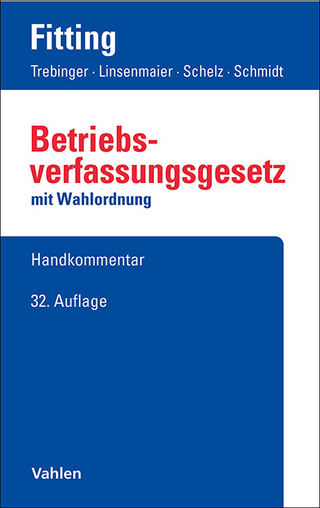
Vicarious Liability
Hart Publishing (Verlag)
978-1-5099-2023-5 (ISBN)
Notions of strict liability have grown increasingly isolated in the law of tort, given the exponential growth in the tort of negligence. They require intellectual justification. Such a justification has proven to be elusive and largely unsatisfactory in relation to vicarious liability and to concepts of non-delegable duty. The law of three jurisdictions studied has now apparently embraced the ‘enterprise risk’ theory to rationalise the imposition of vicarious liability. This book subjects this theory to strong critique by arguing that it has many weaknesses, which the courts should acknowledge. It suggests that a rationalisation of the liability of an employer for the actions of an employee lies in more traditional legal doctrine which would serve to narrow the circumstances in which an employer is legally liable for a wrong committed by an employee.
Anthony Gray is Professor of Law at the University of Southern Queensland, Australia.
PART I: OUTLINE OF DEVELOPMENT OF VICARIOUS LIABILITY IN CHOSEN JURISDICTIONS
Introduction to Part I
1. Developments in English Legal History
Historical Development of Vicarious Liability Until the Early Twentieth Century
Vicarious Liability in the Context of Other Developments in Tort Law
Summary and Reflections on Historical Development of Vicarious Liability
2. Developments in United Kingdom Vicarious Liability Law: Twentieth and Twenty-First Centuries
Development
Most Recent Developments
Some Critique and Reflection on United Kingdom Case Law
3. Developments in Australian Case Law
Historical Development
Most Recent Developments
Some Critique and Reflection on Australian Case Law
4. Developments in North American Case Law
Canadian Development
United States Developments
Conclusion to Part I
PART II: THEORIES OF VICARIOUS LIABILITY
Introduction to Part II
5. Enterprise Risk Theory
Scholarly Support for Enterprise Risk Theory
6. Criticisms of Enterprise Risk Theory
Summary of Weaknesses in Relation to Enterprise Risk as a Species of Strict Liability to Justify the Imposition of Vicarious Liability
Historical Weaknesses
The Theory Does Not Explain the Existing Contours of Vicarious Liability
The Theory Seems Applicable as a General Principle by which an Organisation is Liable to Others for Harms Caused, but is Not So Applied
It Makes ‘Brave’ Assumptions about Loss Spreading and Insurance
It Does Not Describe How Judges Actually Decide Tort Cases, and Does Not Describe How Judges Should Decide Tort Cases
It Relies on Inherently Ambiguous Concepts
Deterrence
7. Other Theories
Evidentiary Considerations
Deep Pockets
Fair, Just and Reasonable
Conclusion
8. Agency Theory
Introduction to Agency Theory of Vicarious Liability
Pragmatism and Principle
(a) Argument that the Act of the Agent (Employee) is in Effect the Act of the Principal (Employer)
(b) Argument that the Law of Vicarious Liability Imposes Liability on the Principal (Employer) for the Acts of the Agent (Employee), but Does Not Consider them the Employer’s Acts
The Law of Agency
Conclusion to Part II
PART III: MISCELLANEOUS ISSUES
Introduction to Part III
9. The Relationships to Which Vicarious Liability Might Attach
Establishing that an Employment Relationship Exists
The Exceptionality of Making One Person Liable for the Actions of Another
Why Has the Law Fixated on ‘Control’ in Relation to Liability for What Another Did?
Borrowed Employees and the Possibility of Dual Vicarious Liability
Conclusion
10. Non-Delegable Duties
Relationship with Vicarious Liability
Development of the Non-Delegable Duty Concept in the United Kingdom
Australian Developments
Criticisms of the Concept of a Non-Delegable Duty
Conclusion
11. Punitive Damages
Punitive or Exemplary Damages
Nature of Punitive Damages
Reflections on Punitive Damages in the Vicarious Liability Context
Conclusion
Conclusion to Part III
Conclusions
| Erscheinungsdatum | 29.09.2018 |
|---|---|
| Reihe/Serie | Hart Studies in Private Law |
| Verlagsort | Oxford |
| Sprache | englisch |
| Maße | 156 x 234 mm |
| Gewicht | 594 g |
| Themenwelt | Recht / Steuern ► Allgemeines / Lexika |
| Recht / Steuern ► Arbeits- / Sozialrecht ► Arbeitsrecht | |
| Recht / Steuern ► EU / Internationales Recht | |
| Recht / Steuern ► Privatrecht / Bürgerliches Recht ► Besonderes Schuldrecht | |
| ISBN-10 | 1-5099-2023-4 / 1509920234 |
| ISBN-13 | 978-1-5099-2023-5 / 9781509920235 |
| Zustand | Neuware |
| Haben Sie eine Frage zum Produkt? |
aus dem Bereich


